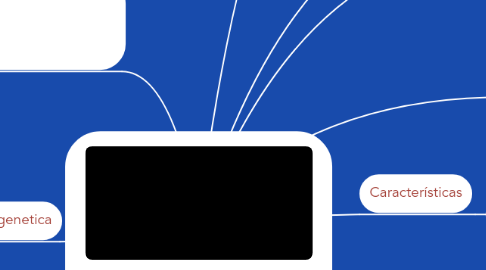
1. La obtención de un organismo transgénico mediante técnicas de ingeniería genética implica la participación de un organismo que dona el gen de interés y un organismo receptor del gen que expresará la nueva característica deseada.
2. ingenieria genetica
2.1. A. tumefaciens adhiriéndose a una célula de zanahoria.
2.1.1. Training
2.1.2. Channels
2.1.3. International
2.1.4. Public Sector
2.1.5. Sales
2.1.6. Marketing Communications
2.1.7. Product Management
3. la manipulación controlada y deliberada de los genes de un organismo para lograr que este sea mejor de alguna manera en particular.
4. El ADN -ácido desoxirribonucleico
5. La ingeniería genética -otra forma de llamarlo- es la capacidad de añadir un nuevo ADN o modificar uno ya existente en un organismo.
6. Manipulación Genética
7. Características
7.1. - Metacéntricos: El centrómero se localiza a mitad del cromosoma y los dos brazos presentan igual longitud.
7.1.1. Situational Analysis / Drivers
7.1.1.1. What is driving us to do this?
7.1.1.2. SWOT Analysis
7.1.1.2.1. Strengths
7.1.1.2.2. Weaknesses
7.1.1.2.3. Opportunities
7.1.1.2.4. Threats
7.1.1.3. Customer Findings - What have we learned from customers?
7.1.2. Competitive Analysis
7.1.2.1. Do we have competitors and threats in these target markets with the proposed offerings?
7.1.2.2. What are our competitors doing and how are they positioning?
7.1.2.3. How do we position against each competitor?
7.1.3. Target Customer(s)
7.1.3.1. Buyer Profile
7.1.3.1.1. Title
7.1.3.1.2. Industry
7.1.3.1.3. Geography
7.1.3.1.4. Business Size
7.1.3.2. Influencer Profile
7.1.3.3. User Profile
7.1.3.4. What do customers want and need?
7.1.3.5. What business problems do each of these customers have?
7.1.4. Customer Segmentation
7.1.4.1. Which customers or sets of customers do we sell to?
7.1.4.2. What are the target market segments that we want to go after?
7.1.4.3. What are the distinct problems for each segment of the market?
7.1.5. Total Available Market
7.1.5.1. New Prospects
7.1.5.1.1. How much of each target segment have we penetrated?
7.1.5.1.2. How much opportunity is available in each target segment?
7.1.5.2. Existing Customers
7.1.5.2.1. Can we up-sell existing customers?
7.2. - Submetacéntricos: La longitud de un brazo del cromosoma es algo mayor que la del otro.
7.2.1. Service Offer
7.2.1.1. What are we selling?
7.2.1.2. Product Definition
7.2.1.3. Pricing
7.2.1.4. Packaging
7.2.1.5. Positioning
7.2.2. Value Proposition
7.2.2.1. What is the Value Proposition to the Customer?
7.2.2.2. What pain are we solving?
7.3. - Acrocéntricos: Un brazo es muy corto (p) y el otro largo (q).
7.3.1. Revenue Forecasts
7.3.1.1. Revenue and P&L Forecast (5 Years)
7.3.1.2. Revenue should be split out quarterly
7.3.2. Cost Analysis
7.3.2.1. Should include a description of the costs in entering this business and profitability analysis
7.3.3. Profitability Analysis
7.3.3.1. P&L for the offer to include gross margin, net income and break even analysis.
7.4. Poliploidías: no se da en seres humanos.
7.4.1. Sales Strategy
7.4.1.1. Direct Sales Strategy
7.4.1.2. Inside Sales Strategy
7.4.1.3. Channel Sales Strategy
7.4.2. Partner Strategy
7.4.2.1. Channel Strategy
7.4.2.1.1. What 3rd party channels should we consider for reselling this service?
7.4.2.2. Technology Partnerships
7.4.2.2.1. What technology vendors (if any) do we need to work with to execute on this plan?
7.4.2.3. Solutions Partners
